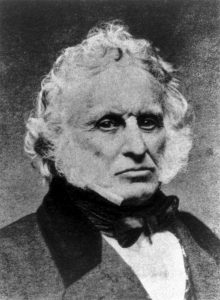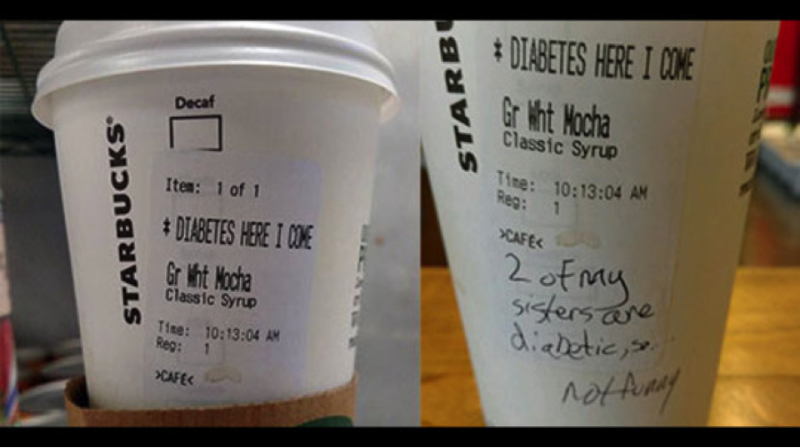You’ve probably heard the expression “one man’s trash is another man’s treasure”. Now, trash might not be the best analogy for ice but the expression holds true when we think about the ice trade of the 19th century.
 This is Frederic Tudor. If you’ve never heard of him before, it’s okay. Neither had I until I recently read Steven Johnson’s brilliant book “How We Got To Now” where he presents 6 discoveries humans made that propelled our species forward to where we are today. And believe it or not, ice was one of them. I am not going to talk about why ice was a game-changing discovery and how it affected human civilization in this article but instead I want to share some interesting facts from Tudor’s venture as the largest ice trader of his time.
This is Frederic Tudor. If you’ve never heard of him before, it’s okay. Neither had I until I recently read Steven Johnson’s brilliant book “How We Got To Now” where he presents 6 discoveries humans made that propelled our species forward to where we are today. And believe it or not, ice was one of them. I am not going to talk about why ice was a game-changing discovery and how it affected human civilization in this article but instead I want to share some interesting facts from Tudor’s venture as the largest ice trader of his time.
What is the big deal with ice?
In the 19th century, ice was a luxury good that was mainly consumed by the rich. Unless you were living in a cold climate where water froze in winter to create natural ice, it was not attainable for the average person.
Frederic Tudor was born to a wealthy family in Boston. As a young man he spent a lot of time in the American Northeast, as well as Cuba. Having experienced extreme cold and extreme heat, he thought that people in warm climates like Cuba would benefit greatly from the wonders of ice, which was abundant in Northeastern United States. It’s also important to note that in the 19th century, ice was the closest thing to refrigeration; it was not only used to cool drinks but also as an air conditioner. (It was not uncommon for hospitals to hang large blocks of ice off the ceiling to cool the rooms).
Tudor’s idea was simple (at least in theory): cut blocks of ice from the frozen lakes and rivers in New England and ship them to warmer climates where people had no access to ice.
There were a few major challenges with this idea, the most important of which was keeping the ice intact without melting during shipment. Over the course of a decade Tudor tried different ideas and lost his entire family fortune in the process, going to debtors prison twice. But he never gave up. He believed that he had a great idea and despite all the hurdles he wanted to see it through.
From prisoner to “The Ice King”
His breakthrough came when he finally discovered the perfect way to insulate the ice while traveling on ships for weeks on end: sawdust. He found out that the sawdust was a much more efficient way to keep the ice intact than hay, which is what he had been using until that point. From that moment onward, his business took off and he died a millionaire in 1864.
Now here’s the brilliance of this entire ice business: Tudor took a product (ice) that cost nothing except the labor to cut frozen chunks out of the lake, he then shipped it for a bargain on boats that were travelling practically empty on their way south, using an insulator that cost him nothing because sawdust was the byproduct of forestry industry in New England and was practically everywhere.
Free ice, free sawdust, empty vessels.
An average New Englander’s “trash” became the “treasure” that Tudor “The Ice King” delivered to far away places.
Tudor’s ice trade was also one of the first examples of a “zero-waste” business model, without even consciously trying to be a sustainable operation. His product was naturally occurring in one part of the world, covered by a recycled byproduct from another industry, transported on vehicles that would otherwise make the trip empty and waste fuel, as well as space.
Lastly, Tudor’s ice trade was a major paradigm shift in business principles. Up until that point, businesses were always attracted to “high energy” locations. Warm climates had fertile soil that could be worked all year round and yielded good produce whereas places like the American midwest were cold with barren lands that could not be used half the time. Never before Tudor had anyone considered that these cold places could offer anything to the rest of the world, let alone frozen water.
Looking at the ice trade of the 19th century in hindsight may not impress us too much, since most of us were born into a world that had refrigerators. (I don’t remember not having a refrigerator ever). But when we think about these events in their own context it becomes a whole different story. People like Tudor are the visionaries of their centuries. They could see what others did not at the time and were probably considered crazy. But that’s just the thing about visionaries, their ideas are so far ahead of their time that sometimes it takes decades for the rest of us to catch up.



 When the German car manufacturer Audi was looking to improve its Le Man’s race car performance, the chief engineer presented his team with a constraint. He asked his team how they could win the race if their car couldn’t go faster than anyone else. In other words, he challenged his engineers to find a way to improve the car’s performance without increasing the vehicle’s top speed (the constraint). This self-imposed constraint forced the engineers to think outside of the box. Since they couldn’t increase the speed, they decided that making fewer pit stops during the race would put them ahead of the opponents if their car could go longer without having to refuel.
When the German car manufacturer Audi was looking to improve its Le Man’s race car performance, the chief engineer presented his team with a constraint. He asked his team how they could win the race if their car couldn’t go faster than anyone else. In other words, he challenged his engineers to find a way to improve the car’s performance without increasing the vehicle’s top speed (the constraint). This self-imposed constraint forced the engineers to think outside of the box. Since they couldn’t increase the speed, they decided that making fewer pit stops during the race would put them ahead of the opponents if their car could go longer without having to refuel.
 Triggers are the stimuli in the surrounding environment that makes us think of a product or brand. They are environmental reminders for related concepts. When you are walking down the street and smell the coffee aroma wafting from the coffee shop it might remind you that you are running low on coffee at home. We are surrounded by stimuli that constantly trigger related thoughts and concepts. These triggers are important because when particular thoughts are top of mind, it leads to action.
Triggers are the stimuli in the surrounding environment that makes us think of a product or brand. They are environmental reminders for related concepts. When you are walking down the street and smell the coffee aroma wafting from the coffee shop it might remind you that you are running low on coffee at home. We are surrounded by stimuli that constantly trigger related thoughts and concepts. These triggers are important because when particular thoughts are top of mind, it leads to action. A good example of this phenomenon is the Movember movement. Until a group of drunk Australian guys decided to grow moustaches to raise awareness for prostate cancer, men’s health was a private topic that nobody barely talked about. It is now a global campaign that has become more public than ever with hundreds of thousands of men growing their moustaches every November for this cause. Intentionally or not, the Australian group started a global initiative that went viral since it began, all thanks to making a private issue public.
A good example of this phenomenon is the Movember movement. Until a group of drunk Australian guys decided to grow moustaches to raise awareness for prostate cancer, men’s health was a private topic that nobody barely talked about. It is now a global campaign that has become more public than ever with hundreds of thousands of men growing their moustaches every November for this cause. Intentionally or not, the Australian group started a global initiative that went viral since it began, all thanks to making a private issue public. One of the benefits of UGC is the fact that consumers can bring their own perspective of the product to the table. If a company has 100 customers it means that there are 100 different ways that people are experiencing the product. What better way to make things interesting than to let your customers share these experiences? This can really help a brand develop its own personality in the digital space.
One of the benefits of UGC is the fact that consumers can bring their own perspective of the product to the table. If a company has 100 customers it means that there are 100 different ways that people are experiencing the product. What better way to make things interesting than to let your customers share these experiences? This can really help a brand develop its own personality in the digital space. As great as it is to generate valuable content, what ultimately matters is the results. The return on investment on UGC is completely measurable through social media analytics tools and Google Analytics so that businesses can tell what is working and what is not. It is the ideal way to drive revenue and demonstrate value by measuring the engagement.
As great as it is to generate valuable content, what ultimately matters is the results. The return on investment on UGC is completely measurable through social media analytics tools and Google Analytics so that businesses can tell what is working and what is not. It is the ideal way to drive revenue and demonstrate value by measuring the engagement. With e-commerce rapidly increasing in popularity among millennials, purchasing behaviour is naturally evolving with it. Millennials, otherwise known as Generation Y, are estimated to be the largest consumer group in the US history. According to market research reports by
With e-commerce rapidly increasing in popularity among millennials, purchasing behaviour is naturally evolving with it. Millennials, otherwise known as Generation Y, are estimated to be the largest consumer group in the US history. According to market research reports by 
 These days, consumers have inherent trust issues against corporations. Every time we see an ad that says “free …” we are immediately suspicious. Consumers know that there is no such thing as free when it is coming from a company that is looking for ways to increase its bottom line.
These days, consumers have inherent trust issues against corporations. Every time we see an ad that says “free …” we are immediately suspicious. Consumers know that there is no such thing as free when it is coming from a company that is looking for ways to increase its bottom line. Social proof theory suggests that people are automatically drawn to things that they know others already like and trust. This goes hand in hand with building trust, as the more people are talking about a product (and hopefully saying good things), the better the chances of recruiting more customers. This works from both a consumer and a business perspective. When people don’t have enough information or are unsure of what to do, they turn to a larger group of people who have more knowledge than them. As for the companies, it is a great way to legitimize their claims about a product through actual users validating it for them.
Social proof theory suggests that people are automatically drawn to things that they know others already like and trust. This goes hand in hand with building trust, as the more people are talking about a product (and hopefully saying good things), the better the chances of recruiting more customers. This works from both a consumer and a business perspective. When people don’t have enough information or are unsure of what to do, they turn to a larger group of people who have more knowledge than them. As for the companies, it is a great way to legitimize their claims about a product through actual users validating it for them.